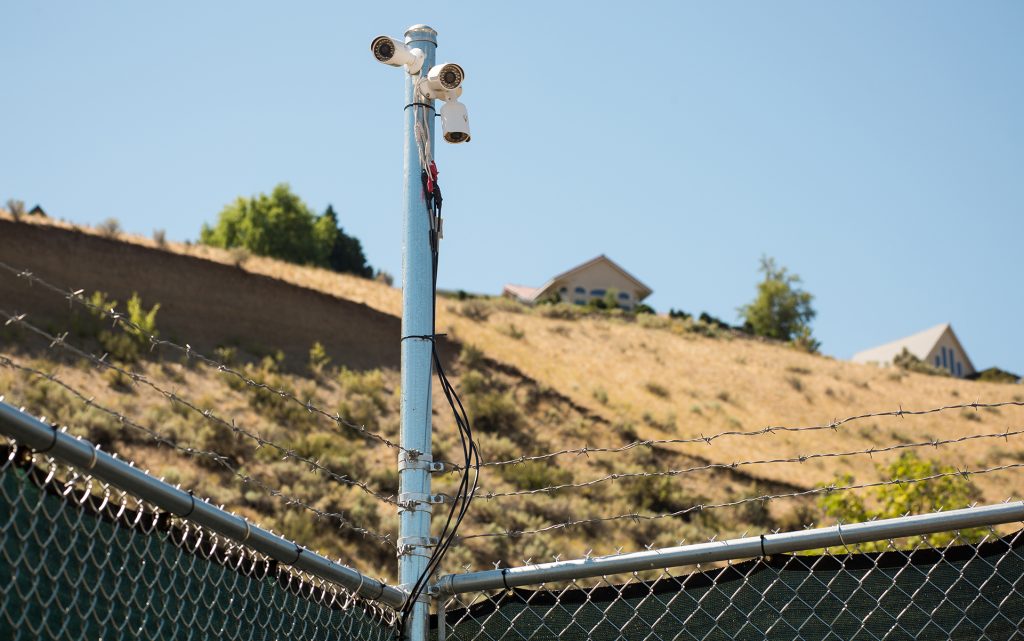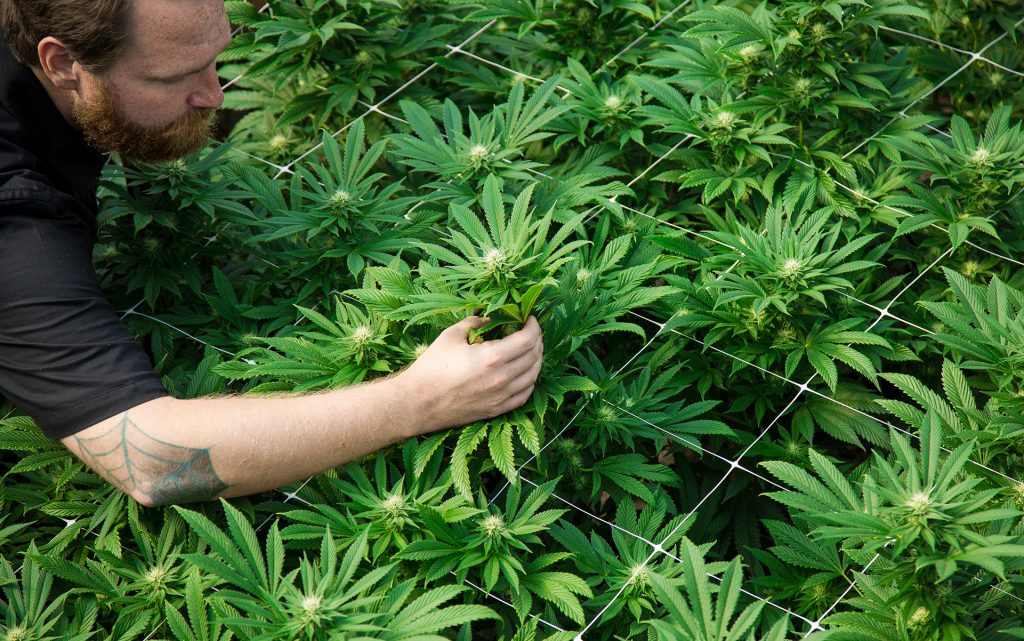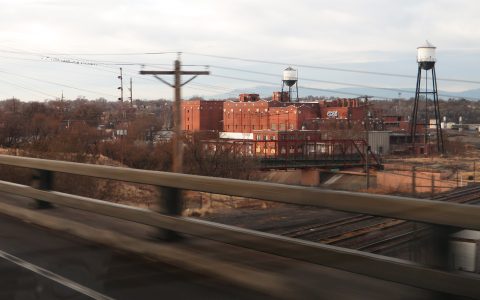“Someone should have flown to Colorado”
There’s more to it than just warring ideologies. Rural governments are small. They have modest budgets and overworked staffs. A big city like Seattle can pull in experts from half a dozen departments to deal with recreational marijuana. A rural municipality, by contrast, might have a single employee charged with regulating a crop that was, until recently, criminalized. “Keep in mind that no one had a line for marijuana [in their zoning code]”, says Perry Houston, head planner in Okanogan County. When it came to legalization, many rural counties and cities were more or less winging it. That made mistakes all but inevitable.
Take the case of Douglas County, which sits across the Columbia River from Wenatchee. Although the county narrowly rejected Initiative 502, the measure had support in the county’s more urban areas, and county officials moved swiftly to add cannabis cultivation to existing farming activities. “We weren’t calling it ‘agriculture,’ but we believed it would have similar characteristics,” says Mark Kulaas. Kulaas is the head of planning for Douglas County, and in his spare time he sits on the Wenatchee City Council. “You know, you grow something, harvest it, package it, ship it and then it’s sold, which isn’t really that much different from what we do with tree fruit.”
Two years ago the county’s prompt action earned plaudits from officials around the state. At the annual meeting of the state association of counties, Douglas County was held up “as an example of how you can treat marijuana now that it is legal,” recalls County Commissioner Dale Snyder.
But the new zoning touched off a land rush by prospective cannabis farmers. During the first few weeks of legalization, Okanogan County averaged six permit applications for farm buildings every day. Nor could many small towns prepare for the clash between new state cannabis laws and existing local regulations. Some of the conflicts have been comical. Washington state requires eight-foot tall fences around cannabis farms. That’s fine—but many counties prohibit fences taller than six feet.
 Security measures at Seven Hills Farms include hundreds of cameras and barbed wire fences (Jordan Stead for Leafly)
Security measures at Seven Hills Farms include hundreds of cameras and barbed wire fences (Jordan Stead for Leafly)
Other conflicts are more substantial.
County officials complain that Washington’s Liquor and Cannabis Board, or LCB, routinely approves farm licenses for grow operations that use buildings, equipment, or procedures that largely ignore local zoning. In one case, when a cannabis farmer was found to be burning his crop waste—in effect, smoking out his neighbors—state cannabis officials admitted to local deputies that they hadn’t actually inspected the farm in person, as required by state law, but instead had reviewed the facility via Google Earth. (A board spokesman says that all farms are inspected in person.)
Once the crops came in, so did complaints about the plant’s pungent fragrance. “You’ve got two to three weeks when you can’t even go outside,” Snyder says. Snyder and his fellow commissioners realized their well-intended regulations had serious gaps. Among them: zoning that allowed cannabis farms next to existing homes or businesses. For Snyder, the takeaway is clear. “I wish we had taken a little more time and let someone else be the pioneer.”
Perry Houston, Head Planner, Okanogan County, WA
Certainly, gaffes like these could have been avoided. Small towns and counties in Washington, for example, would have benefited by studying the experiences of their counterparts in Colorado, where medical cannabis farms had been legalized and state-regulated for years. “Somebody should have gotten on a plane and flown to Colorado and done some research,” says Douglas County’s Kulass. He strongly suggests a similar sort of research trip for small-town officials in other states considering legalization.
“The spin was that this was going to be tightly regulated and everyone would toe the line,” says Okanogan County’s Houston. But “it became fairly apparent to us that the [state] board didn’t have a great handle on this.” That realization, Houston says, was a big factor in the county’s decision to halt new farms and “tighten the rules.”
To be sure, there have been bureaucratic missteps. But growers themselves aren’t entirely blameless. Legalization has brought professionalization to cannabis farming, but the rollout has also included producers who cut corners. In the months before Washington’s recreational market opened, according to local law enforcement, a number of prospective producers got a head start on supply by planting unusually large “personal” crops under their medical marijuana licenses. Others have tried to run extraction operations using sub-standard equipment, which in several cases led to fires—and more bad feelings among locals.
Farmers themselves recognize the problem. “There are a lot of people in the industry who are unsavory,” acknowledges McCormack, with Antoine Creek Farms. When those bad apples “start pissing off their neighbors and not cooperating with the police, and trying to build their structures on the down low,” he says, it helps pump up local anti-cannabis sentiment. In such an environment, McCormack says, “all it takes is somebody with an odor complaint.”
In fact, growers such as Arms worry that, as other fears about recreational cannabis (such as crime spikes) aren’t borne out, opponents may seize on issues like odor to justify their position that local governments “shouldn’t allow it.”
 Roy Arms, CEO of Seven Hills and Boggy Boon, tend stop his crops within one of his greenhouse grow operations. (Jordan Stead for Leafly)
Roy Arms, CEO of Seven Hills and Boggy Boon, tend stop his crops within one of his greenhouse grow operations. (Jordan Stead for Leafly)
Solving problems, one by one
Is there any way out of the conflict? Possibly. There are signs that farmers are finding ways to work with their neighbors and local officials to quell the rural backlash. After Chelan County growers threatened litigation over the ban on new producers, for example, the county assembled a working group of residents, growers, and other stakeholders to explore possible compromises. In July, the group proposed several regulations to help manage issues such as odor, which participants are cautiously optimistic can be implemented by year’s end. Even before the working group has issued its findings, individual farmers had been working with unhappy residents to come up with solutions that don’t involve legal briefs and with billable hours.
Farmer Roy Arms has met with neighbors to address their concerns. When one neighbor complained about the greenhouse lights at night, Arms agreed to put on blackout covers earlier in the evening. Arms has also asked neighbors to give him time to see if he can come up with a solution to the odor problem.
In the long run, cannabis’s rural problem is probably best understood less as a terminal disease than an awkward adolescence—one that may ultimately be resolved by the passage of time and the good will of farmers and their neighbors. Certainly, local governments are going to become more sophisticated about regulating the industry and preparing for potential negative impacts. At the state level, meanwhile, legislators in Washington, Colorado, Oregon, and Alaska are tweaking recreational and medical cannabis laws to make life easier for local jurisdictions—improvements that other states considering legalization will likely incorporate from the start.
Rural communities themselves are likely to grow into a greater degree of acceptance. Small-town America has always been suspicious of new arrivals – as, for example, when out-of-town developers propose new subdivisions or resorts. With the marijuana debate, says Okanogan’s Houston, “you’re hearing the exact same discussion — ‘Outside money is coming in and goring the local fabric of our culture.’” In time, those suspicions often fade, especially when the changes come with economic benefits. Even the skunkish smell might eventually come to be seen as a sign of a vital industry, much like the aroma of the manure farmers now spray on orchards and fields.
 The greenhouses of Seven Hills Farms in Malaga, WA. (Jordan Stead for Leafly)
The greenhouses of Seven Hills Farms in Malaga, WA. (Jordan Stead for Leafly)
This isn’t to suggest a rural future of total cannabis tolerance. Just as many residents in central Washington will never embrace legal cannabis or its side effects, rural America as a whole will remain divided over the issue. Some towns and counties may never relent. Decades from now, America’s cannabis map will still be a patchwork of “yes” and “no” states, counties, and cities. But in places where legal cannabis production has a toehold today, however tenuous, economic trends may ultimately overcome social resistance.
And those economic trends are powerful. It’s already clear that that sun-grown cannabis will claim an ever-greater share of the market. Consumer interest in “natural” product, raised with fewer chemicals and a smaller-carbon footprint, will drive demand for the outdoor crop. Rural growers also stand to benefit from an evolving retail product mix, particularly the growing popularity of dabs, oils, and other concentrates. Because these products require large volumes of bulk cannabis, demand will rise for the lowest-cost raw material—and the large-scale outdoor and greenhouse operations that can supply it.
All these market trends will make rural cultivation steadily more attractive. That will be true for outside veteran operators and investors from the big urban centers, but also for current rural residents looking for alternatives to farming more conventional crops. As Easley puts it, “If I’m a local farmer making $170 an acre with corn and suddenly, I have an opportunity to make a couple million off that same acre cultivating cannabis, what do you think I’m going to do?”

